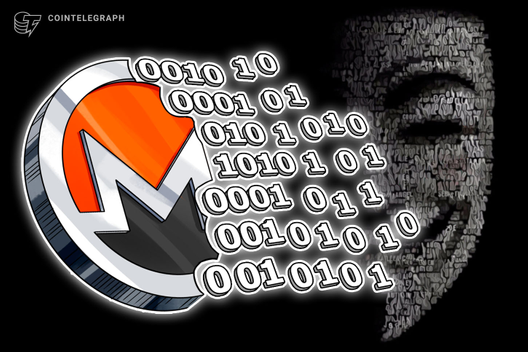‘Computer language that anyone can read’ launches Aeternity compiler
Smart contract computer language Lexon (LEX) launched a compiler on Aug. 3, allowing developers to write contracts in Lexon and have them be converted into Solidity, Sophia or JavaScript, according to statements made to Cointelegraph by Lexon founder Henning Diedrich. The compiler runs on the Aeternity (AE) blockchain network and charges LEX tokens as payment for each compilation cycle.
Dubbed “the computer language anyone can read,” Lexon is a computer language intended to seem like an ordinary written or spoken language. Specifically, the current version is developed to look and sound like ordinary English.

In a conversation with Cointelegraph, Diedrich claimed that the language and compiler provide three main benefits to developers and users. First, it can be used as an educational tool to teach smart contract programming. Remix, a popular tool for learning Solidity, has developed a Lexon plugin that allows students to type agreements in Lexon and see their translations in Solidity, enabling them to understand what the Solidity code means in plain English. In Diedrich’s view, this can help students comprehend how Solidity and smart contracts work.
Second, contracts can be written in Lexon to make them “self-documenting.” Instead of a technical writer needing to write documentation explaining what the code does, the code itself can be written in a language that ordinary people can understand. Programmers have been trying to develop algorithms that can produce documentation from a set of code, but Lexon approaches the problem differently, making the code readable, Diedrich claimed.
Third, Lexon can be used to produce better graphical user interfaces (GUIs) and in a more automated way. “You can use the richness of the information to create better GUIs, because you can generate more from [this] human way of expressing the logic, than you can when you take as a starting point the third-generation language like Solidity,” Diedrich stated.
Related: How to detect fake news with natural language processing
Diedrich cautioned that the compiler can only translate in one direction, from Lexon to another language. It cannot translate another computer language back into Lexon. This means that it can’t be used, for example, to more easily debug smart contracts that were not initially written in Lexon, as he explained:
“Natural language is, of course, very much richer than third-generation languages like solidity. […] And the act of leaving things out is actually something that the compiler does. […] This first translation step is losing so much information that the way back is really difficult. […] Because it can never be as good as Lexon itself.”
However, he argued that if Lexon were to become a common language for smart contract programming, this would make it easier for ordinary people to understand how Web3 apps actually function, which would accomplish the same objective that a Solidity-to-Lexon compiler would.
According to Diedrich, the team chose Aeternity because of its low gas fees and high scalability. The team is currently distributing LEX in exchange for AE tokens.
The difficulty of reading Solidity contracts continues to be a stumbling block for decentralized finance users. Users who don’t know how to code must often rely on smart contract security auditors to determine whether a contract has a vulnerability, and this can leave them vulnerable to undiscovered exploits. On July 2, an exploiter removed over $1 million of users’ funds from the Chibi Finance app without their permission in what has been described by security researchers as a “rug pull.” The exploiter used a function called “panic” to drain the funds, and most users didn’t know this function existed.
In a similar example on July 28, investors plowed at least $2 million into the Pond0x (PNDX) memecoin only to find out that its transfer function allowed anyone to transfer Pond0x coins without the owners’ consent. The Pond0x token quickly collapsed in price to near zero.









